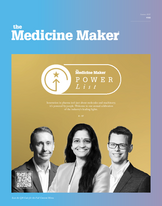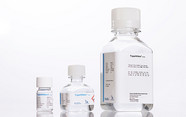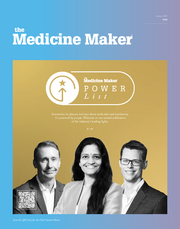Three Amazing Medicine Making Stories
Ivermectin, Viagra and warfarin; I look at the origins of three popular drugs and the role of serendipity
Stephanie Vine | | 3 min read | Historical

Viagra: a side effect that was almost overlooked
Pfizer scientists discovered Viagra (sildenafil citrate) in the 1980s when they were looking for potential treatments for angina. Results for sildenafil in angina were not looking promising and the drug was at risk of being scrapped. At one of the final trials in Merthyr Tydfil, UK, participants had to stay at the clinic overnight. In the morning, a questionnaire was given out. One man reportedly spoke up to say that he “seemed to have been having erections all night.” The other participants also then confessed to something similar.
When reviewing the paperwork of previous trials, it seemed that the side effect had been reported several times – but had never been relayed back, perhaps because it was deemed embarrassing or irrelevant.
Ivermectin: a chance encounter in soil
In the 1970s, microbiologist Satoshi Ōmura from the Kitasato Institute in Tokyo took soil samples in Japan that contained new strains of the bacteria, Streptomyces. He was interested in whether any of the agents produced by the bacteria could have antibacterial qualities. The most promising candidates were sent to an MSD research laboratory in the US, where they found their way to parasite expert, William Campbell. One of the components seemed to be highly potent against parasites – and was named avermectin. It was later chemically modified to ivermectin.
In a presentation given at Cornell University, Campbell explained that they had decided to test ivermectin in parasitic arthropods, but then one of the research rabbits came down with a heavily mite-infested ear. Ivermectin worked. “This is how science progresses,” he said.
According to a research paper: “Despite decades of searching around the world, the Japanese microorganism remains the only source of avermectin ever found.”
Campbell and Ōmura were jointly awarded a Nobel Prize in 2015. They received half the prize; the other half went to Tu Youyou for her discoveries on a novel therapy against Malaria.
Warfarin: illness in cows led the way
In the 1920s, a farmer approached Karl Paul Link at the University of Wisconsin to ask for help with something that was killing his cows. The problem turned out to be sweet clover – which can be found in fields harvested for hay – and becomes an anticoagulant when it rots. Link wanted to understand the biochemistry of the problem, and he and his assistants eventually succeeded in isolating the substance that prevented blood from clotting. It was dicumarol, which is formed by a reaction between coumarin – a chemical agent found in sweet clover – and certain molds.
Link and other collaborators eventually sought assistance from the Wisconsin Alumni Research Foundation (WARF) and were able to secure patents for their work, and explore different analogs of dicumarol. They realized that, in theory, it might be possible to prevent dangerous prevent blood clots in humans.
However, the first commercial use of a dicumarol analog was as a rat poison – launched in 1948. The WARF acronym was combined with the last syllables of coumarin to create the new name: warfarin. The same analog used for rat poison was also found to be the best option for preventing blood clots in people. A water-soluble version, warfarin sodium was approved for human use in 1954 under the brand name Coumadin.
It became the world’s most widely used rat poison and blood thinner.

Making great scientific magazines isn’t just about delivering knowledge and high quality content; it’s also about packaging these in the right words to ensure that someone is truly inspired by a topic. My passion is ensuring that our authors’ expertise is presented as a seamless and enjoyable reading experience, whether in print, in digital or on social media. I’ve spent fourteen years writing and editing features for scientific and manufacturing publications, and in making this content engaging and accessible without sacrificing its scientific integrity. There is nothing better than a magazine with great content that feels great to read.



















